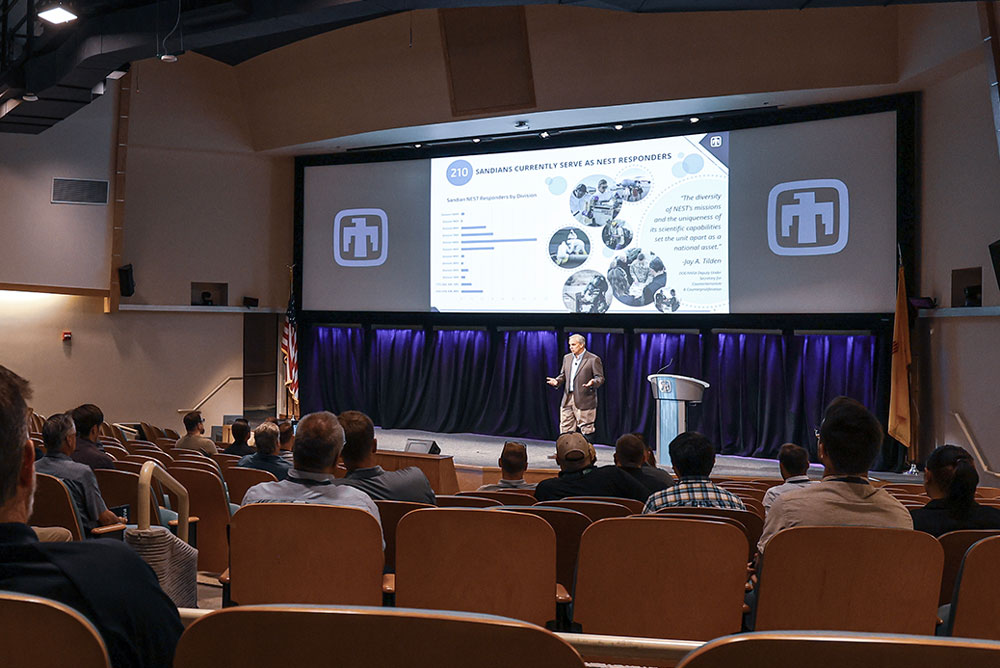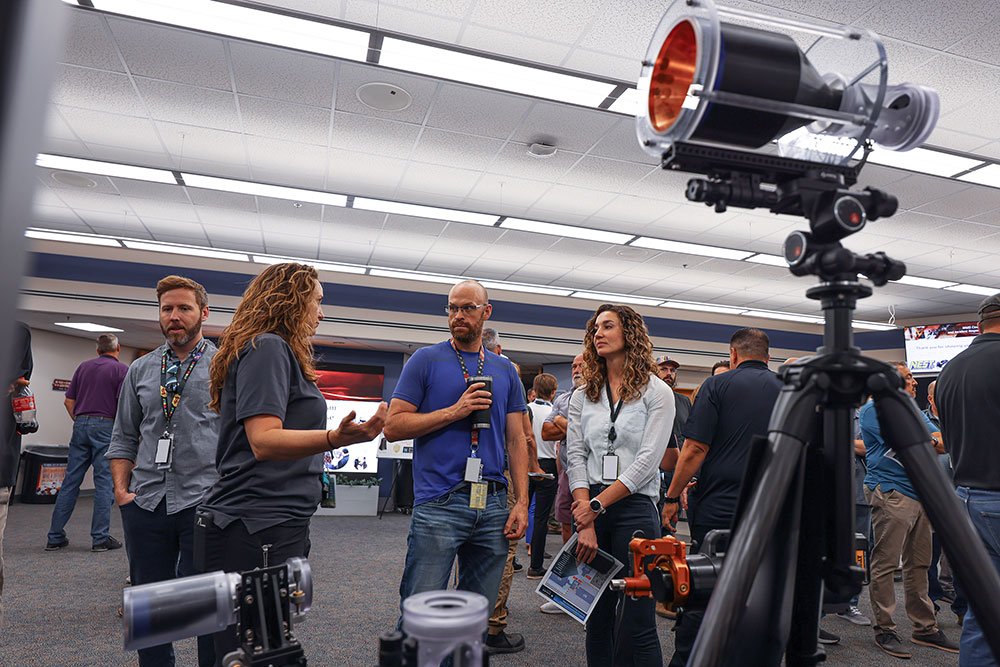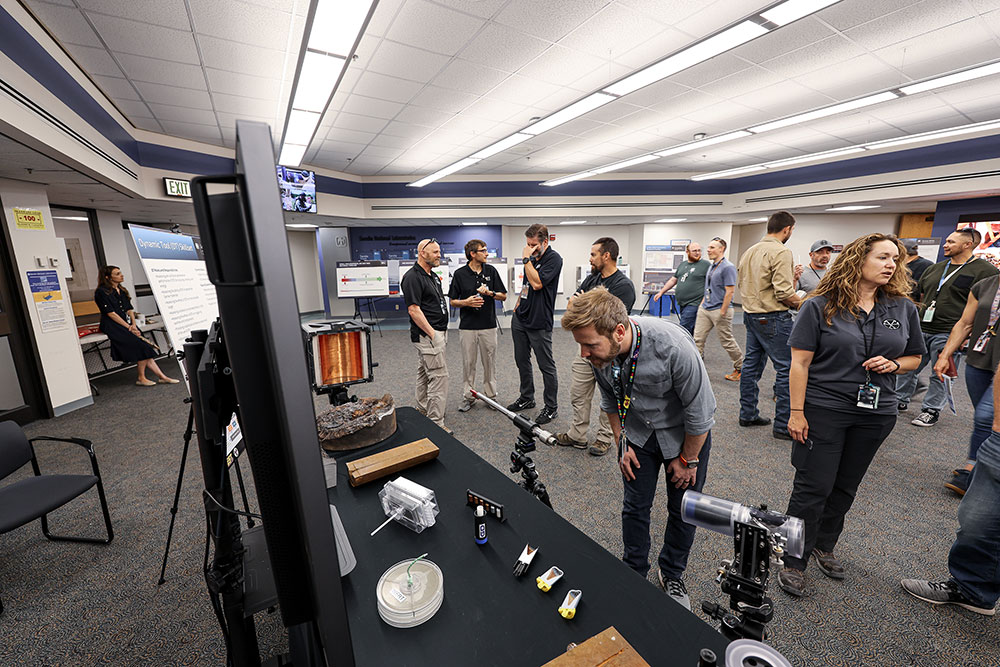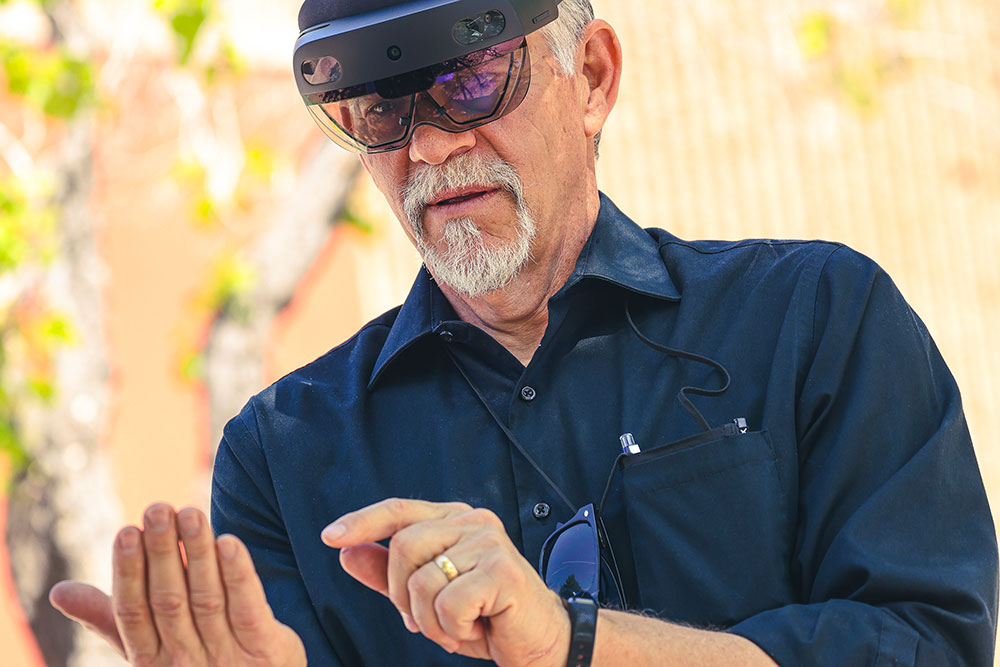Labs showcase highlights detecting, acting on real-world threats

On a warm spring day in Albuquerque, more than 270 people from across the Labs came through Steve Schiff Auditorium for the first Weapons of Mass Destruction Counterterrorism and Incident Response Showcase.
Attendees learned about myriad opportunities to serve as a responder for the Nuclear Emergency Support Team and participate in training drills and exercises in response to incidents involving WMDs and radiological materials. A call was also made to collaborate on research and development to keep pace with rapidly evolving threats.
Representatives from Sandia’s Joint Technical Operations Team, the Consequence Management Program, Accident Response Group, Radiological Assistance Program, Stabilization Program and many more were on-hand to educate on their important role as part of Sandia’s Nuclear Counterterrorism and Incident Response program. The program includes the Nuclear Emergency Support Team mission, as well as numerous technology development efforts and training programs that comprise Sandia’s nuclear incident response resources.
As explained by Mike Enghauser, Radiological Triage skillset lead, “Radiological material can end up in almost any location or any place and take on almost any shape and form.” The incident response program focus on detecting, evaluating, responding to and mitigating threats is not purely hypothetical work. “It is not practice. It is not an exercise. It is real life stuff,” he said.
Visitors to the showcase were also shown virtual reality and haptics technology demonstrations and sat down for lunch from a local food truck.

Art Shanks, senior manager in WMD Counterterrorism and Response, was thrilled with the success of the showcase. “I hope this event brought broader awareness across the Labs’ leadership for those already supporting the mission so their management — and management all the way up the Sandia chain — will understand the importance and significance of the Nuclear Counterterrorism and Incident Response mission. I also hope that staff from around the Labs that are interested in this very important mission area learned about opportunities where they could help support as either a responder or as part of the cutting edge research that supports the programs,” Art said.
Highlighting a national asset
Before the event, a tour included Deputy Labs Director David Gibson and multiple senior leadership team members. Associate Labs Director Justine Johannes kicked off the day by speaking of the vital efforts of the incident response program and its impact on the Nuclear Emergency Support Team mission. “[The Nuclear Counterterrorism and Incident Response program] serves a national mission by drawing on capabilities from across every division at the Laboratories,” Justine said, further characterizing the program as a “combination of operational readiness enabled by research and development innovation and technology development.”
“I was very excited to see how engaged the leadership was during their visit,” Art said. “I also heard from many people, including several from the senior leadership team, about how helpful this event was to give visibility to all the different elements and help connect how all the assets are involved, including the impacts on current real-world events. For a program that often works quietly in the background with a high level of operational security, it was great to give a little visibility to those supporting the mission.”

Also in attendance for the tour was Mike Peters, Albuquerque deputy director of NNSA’s Office of Nuclear Incident Response. He praised the efforts of the Nuclear Counterterrorism and Incident Response program and its support of the Nuclear Emergency Support Team for his office, which relies upon responders across Sandia to be among the first to respond to a nuclear incident.
The Nuclear Emergency Support Team roster currently includes 210 Sandians from the New Mexico and California sites, spanning every division at the Labs. Jay Tilden, the NNSA deputy under secretary for counterterrorism and counterproliferation, has said that the “diversity of [the team’s] missions” and its scientific capabilities “set the unit apart as a national asset.”
Lindsay Klennert, Sandia’s executive chief of staff, said that while the incident response mission is already well-regarded by the senior leadership team, often in association with response activities and exercises, the showcase “provided an opportunity for Sandia’s leadership to see the breadth of the program — the number of divisions that support the mission, the space utilized, the variety technical expertise required and impressive capabilities developed by Sandia to enable response.
“Everyone walked away with an appreciation for how the program reaches across the Labs to push knowledge and capability development to best respond to the unknown at a moment’s notice,” she said.
Ready when we are needed
Nuclear Emergency Support Team responders come from a variety of backgrounds but share one important commonality: the passion to serve and use their training to make the nation safer.

Kevin Hart, Radiological Assistance Program manager, explained his love for his job as “the ability to take all the technical training that I’ve had and get out in the field, carry backpacks and work with law enforcement, civil support teams and the general public to help protect the nation from nuclear terrorism or radiological terrorism activities.”
Sean Fournier, a nuclear engineer, echoed that sentiment. “It is exciting work knowing that you are playing a key role in helping to keep the nation safe.
“We practice and build technologies and devote our careers to build a program that we hope to never have to use. But it is very important that we are ready when we are needed,” Sean said.
The WMD Counterterrorism and Incident Response Showcase brought those already devoted to the mission together while extending an invitation to those interested in engaging.
“I am very excited by how effectively this event helped those already supporting the program to connect how all the different elements of the program work together,” Art said. “I also hope those who are interested in becoming more involved were able to make contacts and identify some ways to become involved, whether by becoming a responder or as part of the research and development efforts that support the program.”